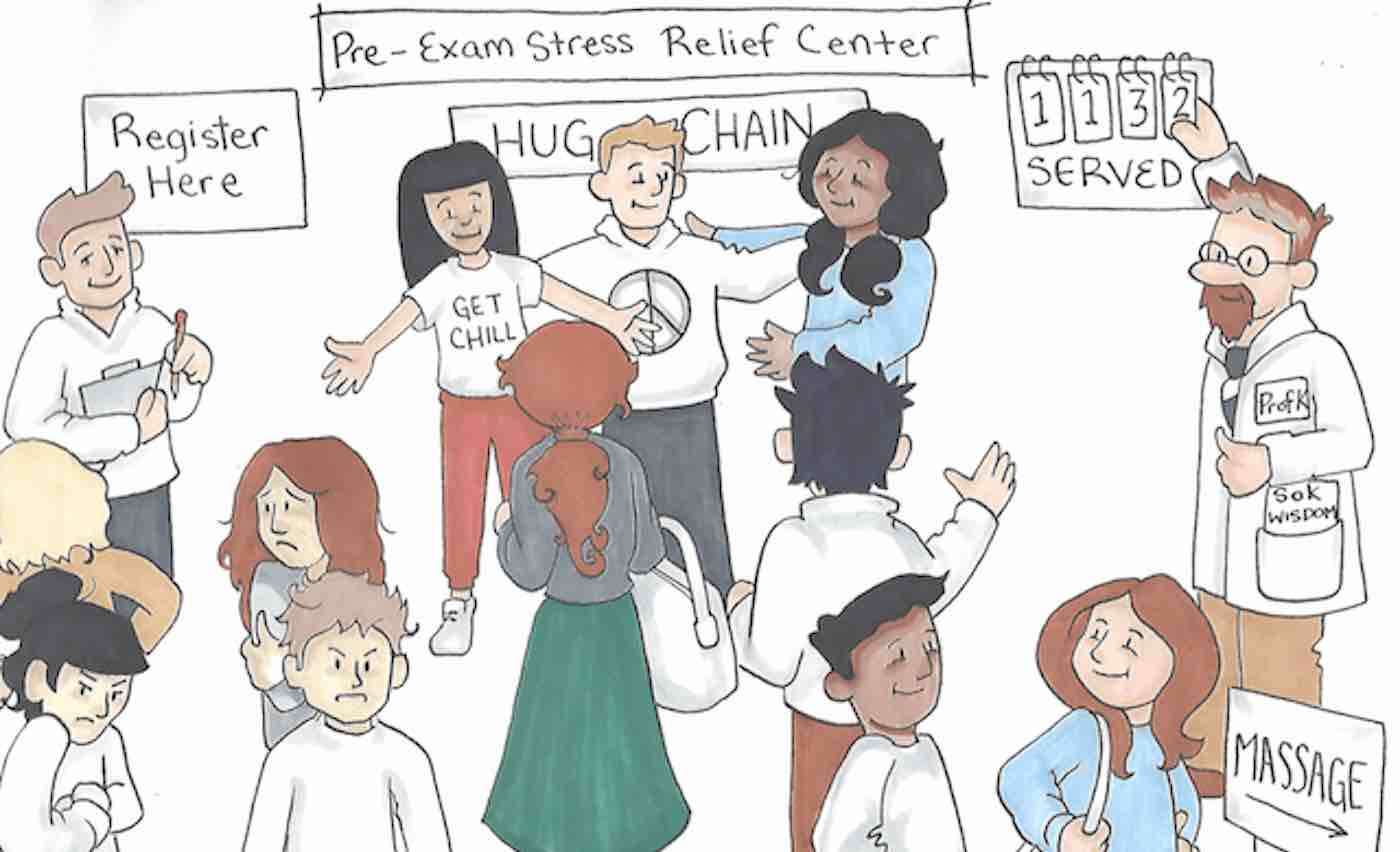Gentle Ear Stimulation Shown to Significantly Reduce Symptoms of Parkinson's Disease-Even Months Later
A simple new non-invasive device from the University of Kent could drastically improve the livelihood of people living with Parkinson's disease.

This installment of the Science of Kindness is reprinted with permission from Envision Kindness.
At the times in my life when I have been angry or upset, a good hug has usually been a very quick remedy for whatever was ailing me. After receiving a warm and genuine embrace from a loved one or friend, the tension in my body would melt away almost immediately—and while the problem itself may not have changed, my reaction to it had.
I have witnessed the same reaction in other people as well—and I'm guessing that you have too; but how does a hug deliver such a remarkable effect so quickly?
Touch is a powerful means of communication. By making physical connection with each other, people's intentions are readily discernible—whether they are comforting and helpful or antagonistic and potentially harmful. In the positive, pro-social mode, hugs are one type of touch that relays the message: "I care about you. You matter."
We require touch with other living beings in order to flourish. The importance of physical contact was painfully observed in the orphanages of Romania: children who were provided food—but not held or hugged—had significant developmental and socio-emotional delay accompanied by smaller brains.
This means that physical contact is not only critical for how these children behaved, but for the development of the brain itself, something which has also been observed in animals subjected to social isolation.
In people subjected to less extreme circumstances, touch affects our response to everyday conflict. This group of researchers interviewed 404 adults daily for 14 days regarding their health, conflicts, how they felt emotionally (positive or negative), and whether or not they received a hug.
People who had received a hug and had an interpersonal conflict reported feeling more positive with less severe negative reactions on that day. They also showed evidence that hugging may favorably influence the rate of infection from a cold as well as symptoms.
Since hugs are a great way to relieve stress, it is not surprising that the number of hugs that a woman receives from her partner is highly related to lower blood pressure as well as higher levels of hormone known as oxytocin, colloquially labeled the "love hormone".
Hugs, of course, are a form of touch that share the same elements as other types of physical connection, like massage and gentle, light touch.
Massage has been shown to decrease pain in a variety of conditions, especially pain associated with cancer, back pain, migraines, etc. It affects the biochemistry that mediates pain or sadness and can also lower blood pressure, reduce cortisol, improve immune responses, stimulate the vagus nerve, and change EEG (brain wave) patterns.
In pre-term (premature) babies, light massage for 15 minutes over the course of one week caused significant increase in weight gain. Complementary to the studies of Romanian orphans, it is remarkable that massage helps babies grow, perhaps by changing their metabolism.
Taken together, it is clear that being touched in a loving and caring way can not only decrease stress, but also help nourish the recipient and help them heal, recover, and grow. Physiologically, we observe activation of specific neuronal and hormonal mechanisms that decrease pain, lower blood pressure (and other markers of stress), and improve physical and mental health.
Nature gave us this remarkable ability to help and heal one another. The challenge is that social custom and fear of inappropriate contact may have decreased our interaction through touching. In a 1999 study of preschool children from Miami and Paris, Field noted that French parents affectionately touched their children much more than American parents. Associated with this tactile difference, American children showed more aggressive behavior than the French.
There are creative efforts to satisfy the need to be touched. Entrepreneurial "professional cuddlers" have opened up shop, offering a variety of platonic ways to be held at pop-up events across various different locations. And, as expected, there are tech-based solutions, such as a hugging vest, a chair that hugs its occupant, as well as pillows that hug and also communicate with your smartphone.
Another complementary approach to fulfilling our physical need for connection may be encouraging people to see other people hugging or touching in a gentle way; researchers found that when people simply see images of other people hugging, they exhibited significant EEG changes. The larger brain wave changes correlated with people who had greater empathic responses to the images.
This work is consistent with Envision Kindness' own research on how images of kindness and compassion—many of which capture caring touch or hugging—are a proven and potent way to induce joy, love, optimism, and connection. Thus, by simply looking at these images, people can experience lower levels of stress and greater joy.
Viewing these images should be rounded out by the real thing whenever possible. So here's a challenge for you, the reader: begin a regular practice of hugging others. Start with people you are comfortable with—friends and family. Try to give at least one each day—you don't have to wait for National Hug Day (January 21st) to do this. And as you feel comfortable and the situation warrants it, consider extending yourself. A hug is a gift to someone else—and remember, giving to someone else is also a gift for yourself.
Interested in learning more about the science of kindness and its role in your life? Visit EnvisionKindness.org to learn more.
Be Sure And Share The Science Of Kindness With Your Friends On Social Media…
Be the first to comment